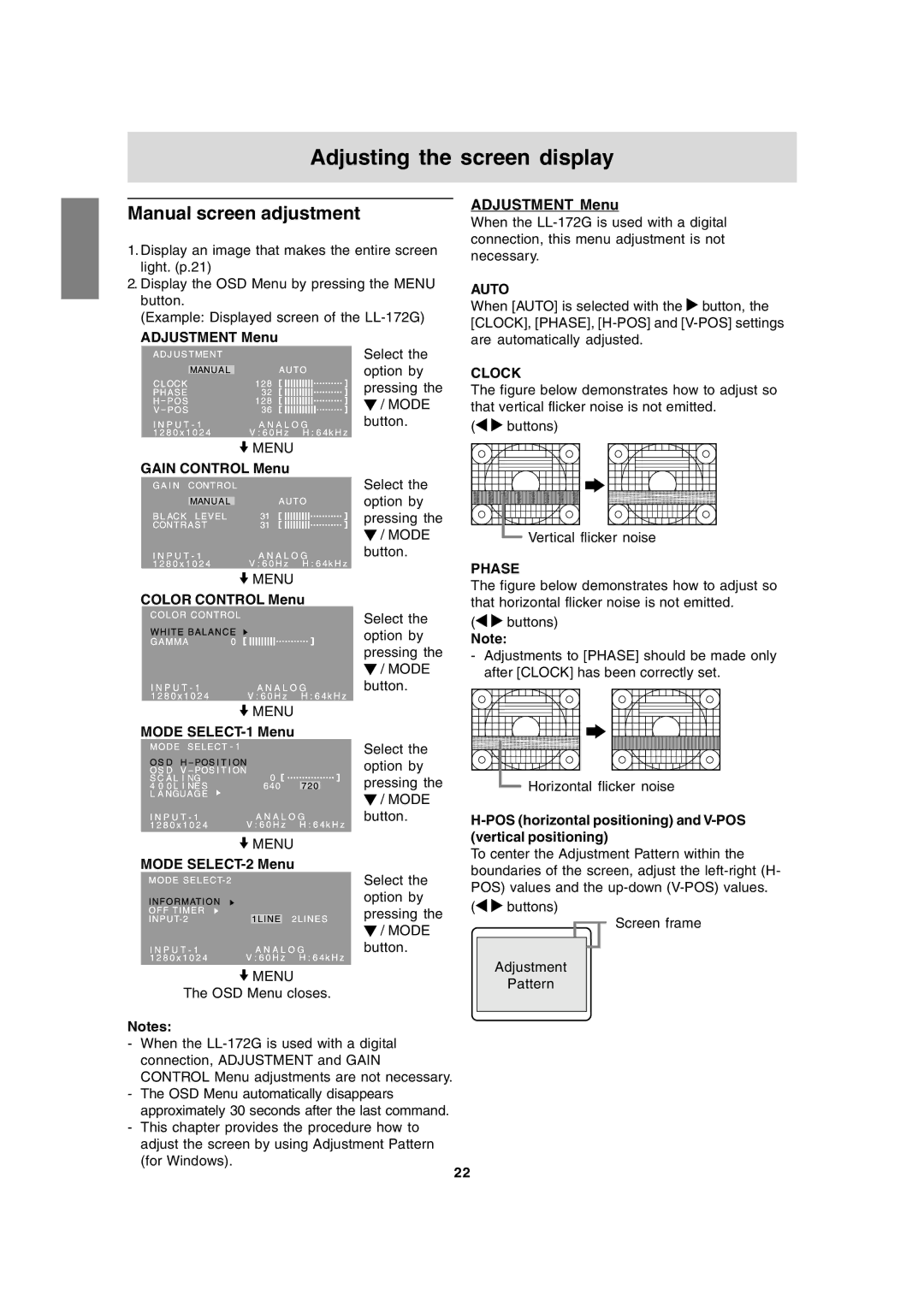
Adjusting the screen display
Manual screen adjustment
1.Display an image that makes the entire screen light. (p.21)
2.Display the OSD Menu by pressing the MENU button.
(Example: Displayed screen of the
ADJUSTMENT Menu
Select the option by pressing the ![]() / MODE button.
/ MODE button.
![]() MENU
MENU
GAIN CONTROL Menu
Select the option by pressing the ![]() / MODE button.
/ MODE button.
![]() MENU
MENU
COLOR CONTROL Menu
Select the option by pressing the ![]() / MODE button.
/ MODE button.
![]() MENU
MENU
MODE
Select the option by pressing the ![]() / MODE button.
/ MODE button.
![]() MENU
MENU
MODE SELECT-2 Menu
Select the option by pressing the ![]() / MODE button.
/ MODE button.
![]() MENU
MENU
The OSD Menu closes.
Notes:
-When the
-The OSD Menu automatically disappears approximately 30 seconds after the last command.
-This chapter provides the procedure how to adjust the screen by using Adjustment Pattern (for Windows).
ADJUSTMENT Menu
When the
AUTO
When [AUTO] is selected with the ![]() button, the [CLOCK], [PHASE],
button, the [CLOCK], [PHASE],
CLOCK
The figure below demonstrates how to adjust so that vertical flicker noise is not emitted.
( | buttons) |
Vertical flicker noise
PHASE
The figure below demonstrates how to adjust so that horizontal flicker noise is not emitted.
(
 buttons)
buttons)
Note:
-Adjustments to [PHASE] should be made only after [CLOCK] has been correctly set.
Horizontal flicker noise
H-POS (horizontal positioning) and V-POS (vertical positioning)
To center the Adjustment Pattern within the boundaries of the screen, adjust the
(![]()
![]() buttons)
buttons)
Screen frame
Adjustment
Pattern
22
